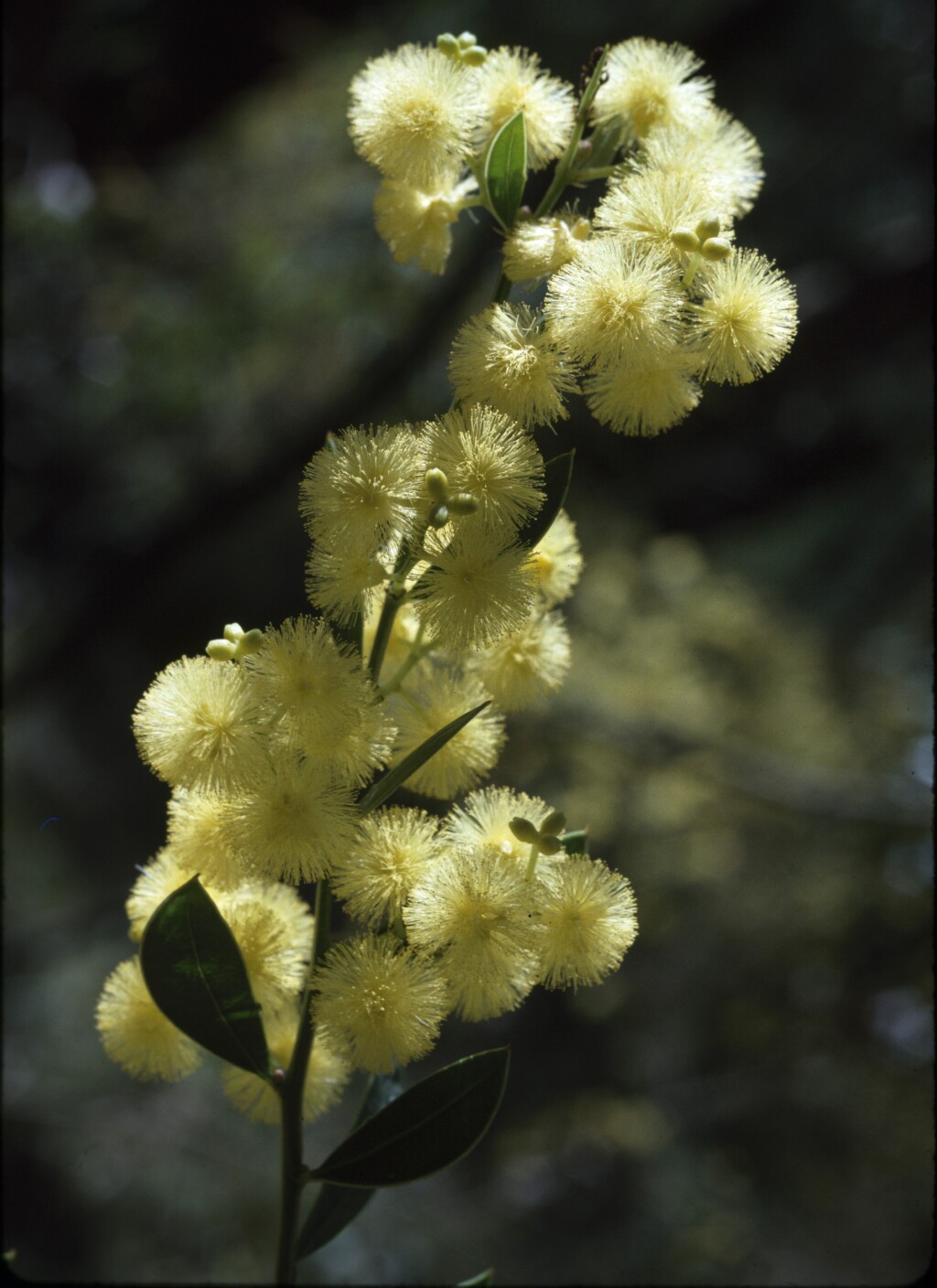Acacia myrtifolia
(Sm.) Willd. Myrtle WattleGlabrous, bushy shrub, 0.5–3 m high; branchlets angled, prominently ribbed, normally red. Phyllodes erect, commonly narrowly elliptic to oblanceolate, sometimes linear to linear-elliptic, mostly 2–13 cm long, 4–30 mm wide, asymmetric, usually thick and coriaceous, green, smooth, acute or obtuse-mucronate, sometimes coarsely pungent; midrib and marginal veins prominent, lateral veins absent or obscure; gland prominent, mostly 0.5–2 cm above pulvinus. Racemes with rachis 1–6(–12) cm long, 3–20-headed; peduncles 3–12 mm long, stout; heads more or less globular, 2–5(–8)-flowered, usually creamy-yellow. Flowers 4-merous, large; sepals united, truncate to sinuolately lobed; ovary minutely tomentose. Pods linear, to 9 cm long, 3–5 mm wide, crustaceous to subwoody, erect, curved, marginal vein thick and undulate; seeds longitudinal, narrowly oblong, 3.5–4.5 mm long, shiny, brown or greyish-brown, aril terminal. Flowers Jun.–Dec.
LoM, Wim, GleP, Brid, VVP, GipP, OtP, WaP, Gold, CVU, GGr, DunT, EGL, EGU, WPro, HSF, HNF, OtR, Strz, MonT, HFE. All states except NT, ACT. Patchily distributed but common through southern Victoria, growing on sand or sand over laterite or granite, in forest, woodland, scrub or coastal heath.
Entwisle, T.J.; Maslin, B.R.; Cowan, R.S.; Court, A.B. (1996). Mimosaceae. In: Walsh, N.G.; Entwisle, T.J., Flora of Victoria Vol. 3, Dicotyledons Winteraceae to Myrtaceae, pp. 585–658. Inkata Press, Melbourne.
 Spinning
Spinning



